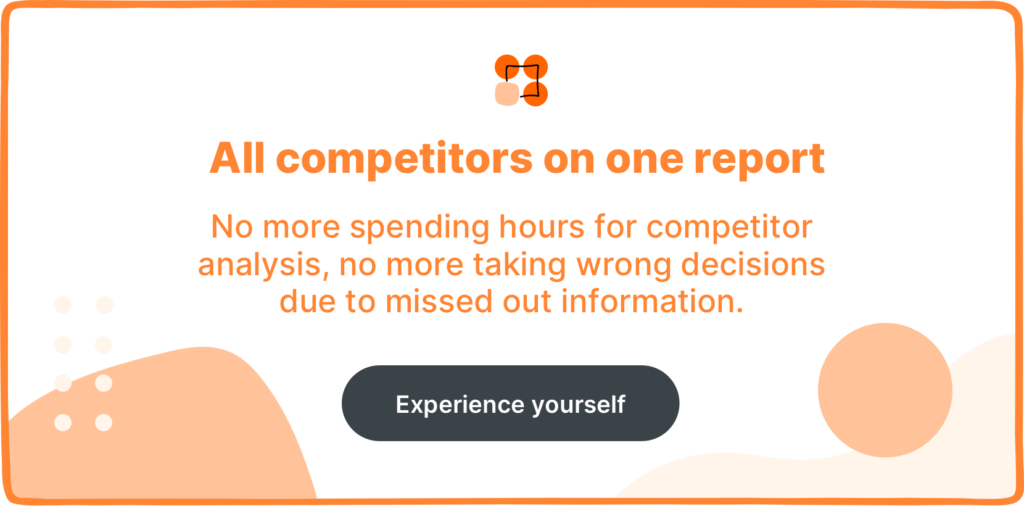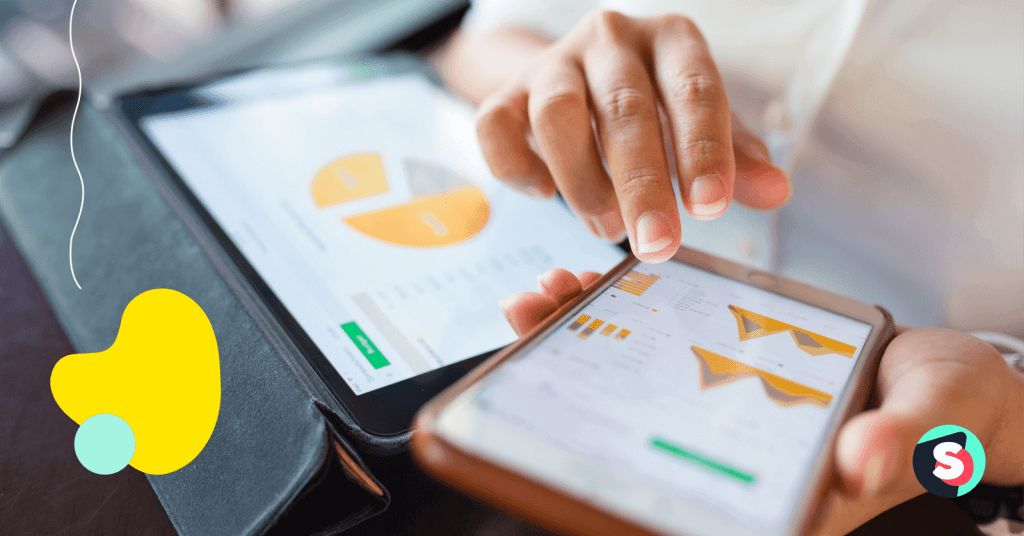Summarize this article via
In the digital era, it is not surprising if all your business competitors promote their products and services on Facebook. The platform is an excellent channel for competitor analysis. Therefore, you can easily monitor what they do, how they promote their business pages, what content they publish, how they drive engagement, and what advertising strategies they are using to build their Facebook audience.
Facebook competitor analysis is an inseparable part of a social media marketing strategy. Not only does it allow you to set accurate benchmarks, but it also allows you to learn from competitors’ successes and failures.
However, conducting a competitor analysis on Facebook is time-consuming. Thus, in this article, we’ll cover marketing solutions that will help you to automate the process with ease and save your social media team’s time.
Get your free Facebook competitive analysis report template
You can download our free Facebook competitive analysis report template to guide you through your own analysis. (No, we won’t spam your email address.)
Click here to download it for free!
- Get your free Facebook competitive analysis report template
- Competitors’ Facebook page analysis
- Why conduct a Facebook competitor analysis?
- The simplest way to start monitoring your Facebook competitors
- How to run Facebook ads competitor analysis
- Automate with a Facebook analysis tool
Competitors’ Facebook page analysis
Knowing your competitors is important for business development. This goes beyond having a simple list with your competitors’ names. The complete analysis should include information on what your competitors are doing, why they are doing them, and where their strategies will likely lead to.
Analyzing how other companies position their products and attract customers is important for building up your own marketing strategy.
Analyzing your competitors’ Facebook pages is not a one-time action. The Facebook marketing strategies are dynamic and adapt to ongoing market changes.
This helps you benchmark your social media marketing results against your competitors so that you will know how well you are doing, can identify growth opportunities, and even build a better Facebook marketing strategy for your business.
During this analysis, you collect and process data on your competitor’s activities on Facebook either manually or with the aid of a tool like Sociality’s social media competitor analysis.
Why conduct a Facebook competitor analysis?
It helps you understand your audience. A business is considered a competitor when you offer similar products or services and thus, target the same audience. Through competitor analysis, you can analyze how your competitors communicate with your audience, their tone, and the frequency of their communication.
Understanding what sort of content drives engagements among your audience helps you recognize their needs and desires. This is so important because if you don’t understand the wants and needs of your audience as it concerns your product or service, there is little chance that your content will get the desired response.
It allows you to benchmark your results against those of your competitors. An increase in the number of your followers or in the average number of comments you get per post is great, but how great are those numbers compared to those of your competitors? You can only know this through competitor analysis.
Benchmarking your results against that of your competitors helps you to put your results into perspective so that you’ll know how well you are doing in your industry and if your progress is in line with your social media goals.
It helps you avoid making the same mistakes as your competitors. Social media marketing sometimes requires you to be daring and to take risks. Sometimes, however, things don’t go as planned on paper, and this can happen to your competitors as well. There may be gaps in their strategies, and they may have made mistakes that you can avoid just by monitoring their social media activities.
Notice which campaign or content didn’t match up to expectations and those that they had to stop or tweak to suit your audience, and avoid repeating the same mistakes. When you do this, you can satisfy your audience more and take more informed risks whenever you need to.
It helps you build a more holistic content strategy. Although you won’t have all the details of your competitors’ social media content strategy, competitor analysis, when done right, can give you most of the vital information you need—from content type to content distribution methods, content frequency, and content consistency. You can get all this information ethically from your competitors’ social media pages.
When you capture your competitors’ strategy, you can then evaluate it using the audience’s response to their content. You can then use this information to create a more holistic social media strategy better suited to your audience.
🧁 Bonus article: Learn from top-performing Facebook pages on how to boost engagement.
The simplest way to start monitoring your Facebook competitors
Step 1: Choose your competitors for analysis.
You probably already have an old drive document on changes happening in the market that is collecting virtual dust somewhere in your “Marketing” folder. Bring it back to life and update it.
Note that your Facebook competitors differ from your regular business competitors. On Facebook, you are fighting for audiences’ attention.
Facebook competitors are categorized as direct and indirect.
Direct competitors offer a product or service similar to yours. For example, all tea producers are direct competitors to each other. That’s easy.
Indirect competitors produce a product that can replace yours. For example, coffee or cocoa producers are indirect competitors of the tea industry. However, on top of that, bloggers and celebrities whose audiences’ demographic characteristics are similar to those of yours are also your Facebook competitors.
Why? Here’s how it works. Bloggers, celebrities, and tea/cacao/coffee producers are competing for their audiences’ top Newsfeed position. If your content outperforms that of other tea producers, it will also crush through the wall of bloggers who benefit from the Facebook algorithm (since they are not business profiles).
Thus, take the above advice and update your old competitors’ documents.
Step 2: Start by collecting simple metrics on one spreadsheet.
Go to each of your competitor’s Facebook pages and collect data there. For example, copy-paste the number of people who like the brand or follow it. What is the difference between these two metrics? People who merely liked the page won’t see the page’s posts in their feed, unlike the page’s followers.
If you use only the data from Facebook, you can track only the following metrics:
- Your competitor’s name;
- Facebook link;
- Number of likes;
- Number of followers;
- Avg. engagement rate on recent 3–12 posts;
- Links to most liked or engaged content (called “unicorn content”; and
- Recent Facebook ad examples.
How to measure Facebook competitors’ engagement rates
Since it’s tough to gather and calculate engagement data manually, we suggest that you use only your competitors’ recent 3–12 posts to measure their engagement rates. This will give you a fresh insight into how brands are currently doing on social media.
Note: Don’t use posts that were very recently posted, like an hour or a day ago. Use posts that have been posted at least two days ago.
Gather the number of total reactions and comments that a post got and use the formula below to calculate the engagement of each position separately.

The result will show the percentage of your competitor’s followers who engaged with that specific post.
Pro tip: Since Facebook has both likers and followers, we recommend going with the followers of the Facebook page rather than the likes.
✨ Related article: Which is more important: Reach vs. Impressions
What is a unicorn Facebook post?
A unicorn Facebook post is content that outperforms others by showing higher than average engagement rates. You can manually analyze it by comparing likes, shares, comments, and reactions from post to post.
Understanding what content drives results is essential to your brand’s successful Facebook marketing strategy. However, you won’t be able to test all hypotheses and experiment results alone. Your competitors are already doing their best to reach an audience similar to yours. Why not learn about their successes and failures?
Related article: How to find your unicorn content
Step 3: Analyze your competitors’ Facebook content strategy.
This step is prone to subjective conclusions. Unless you have access to your competitors’ documents that state their content strategy, you can only intelligently guess what is happening behind closed doors.
Here is a list of questions you should answer:
- How often do your competitors post on Facebook?
- What time do they post?
- What content do they post the most? (These can be text or status, photos, videos, infographics, or links to more information).
- Determine posts that your competitors have boosted or used for ads. (Posts that show considerable spikes in engagement were boosted by your competitors.)
- Do your competitors answer their users’ comments? How long does it take them to do so?
- Do they post user-generated content? What strategies do they use to encourage their users to post such content?
- What hashtag strategy do they use? Do they have branded hashtags?
- Do they offer giveaways or contests?
- What emoji do they commonly use?
Save time with automatically generated competitor analysis reports.
If you don’t want to do your competitor analysis manually, you can use a social media management tool like Sociality.io to create a Competitor Report for Facebook.
There are quite a number of software companies that provide the competitor analysis feature. You can compare the prices of 150+ social media management tools by clicking here. You’ll find out that these costs are often not what they seem to be.
How to run Facebook ads competitor analysis
Go to Meta Ad Library.
In March 2019, Facebook, the company (now Meta), launched Ad Library to make advertisements on platforms more transparent. Ad Library allows anyone to search and overview any advertisement currently running on Facebook and Instagram.
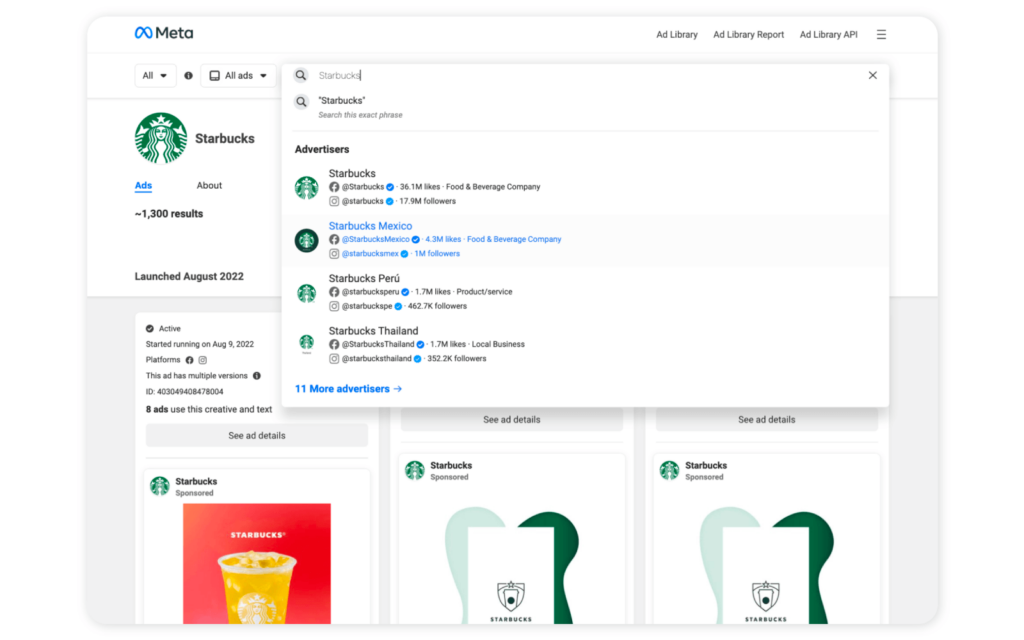
After you type in your competitors’ page names in the search bar, you’ll see a dropdown list with possible options. Note that keyword search is possible only for political ads, so have a ready list of your competitors’ page names.
After you choose the correct Facebook and Instagram accounts, you’ll have a list of all the currently running ads on those accounts. The tool also allows you to filter and analyze ads that are most relevant to you.
Filter also competitors’ ads based on country to understand which countries they are targeting.

Sort also your competitors’ ads based on the platform.
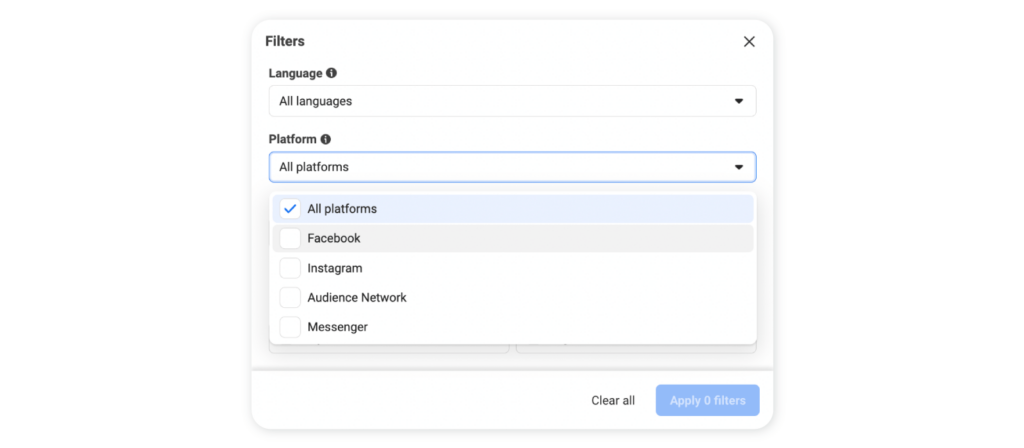
You can also filter your competitors’ ads by content type.
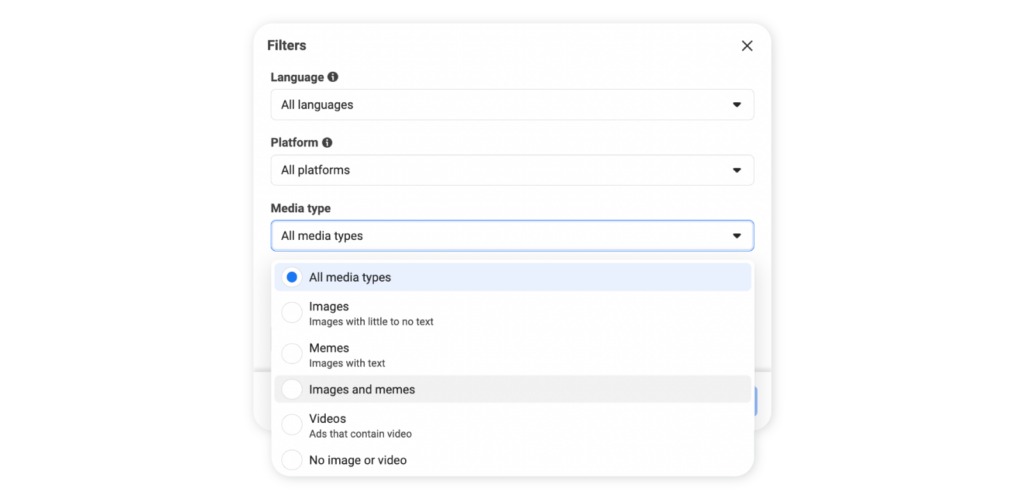
Meta Ad Library is a great tool that makes it easier for you to work with competitor ads. Although its limited filters and lack of exporting capability make it difficult to run advanced social media analytics on it, it gives enough insights to discover your missed opportunities and to learn from your competitors’ successes.
If you are looking for a solution to automate your metrics collection on your competitors’ promoted posts, read this article to learn more: https://sociality.io/blog/track-promoted-posts/.
Automate with a Facebook analysis tool
Sociality.io is a tool that transforms your competitors’ data to your advantage.
Inside Facebook Competitors Report, you get different metrics that can help you understand better your competitors’ presence on Facebook and their results. No manual labor is needed!
The Report has three sections: Fans, Page Posts, and Engagement.
Fans
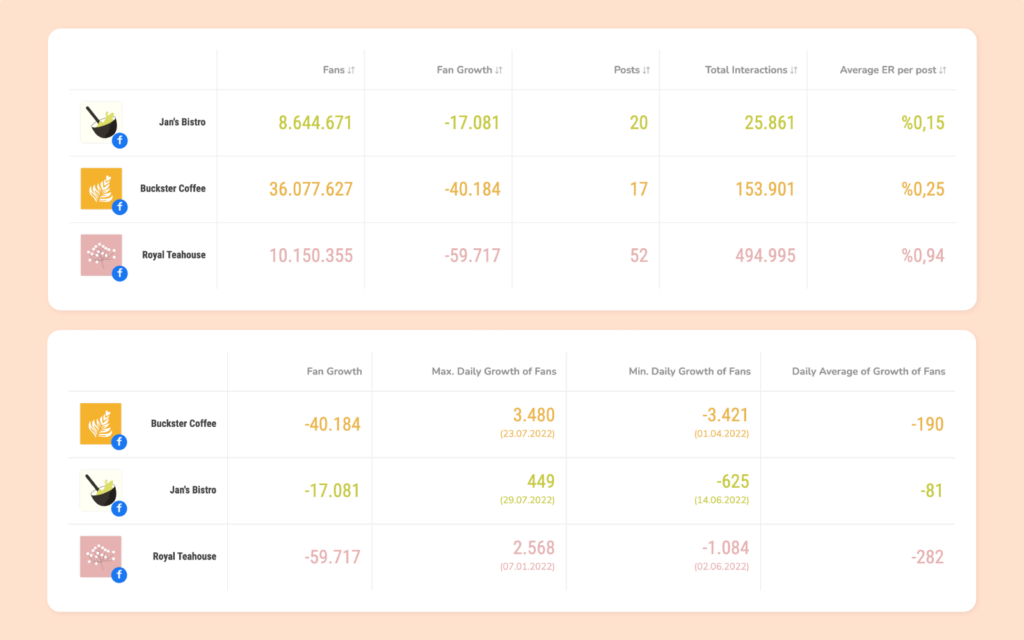
The Fans report helps you understand how effective your competitors are in growing their audience on Facebook compared to you. It can help you adjust your goals to make them realistic for your market.
Page Posts
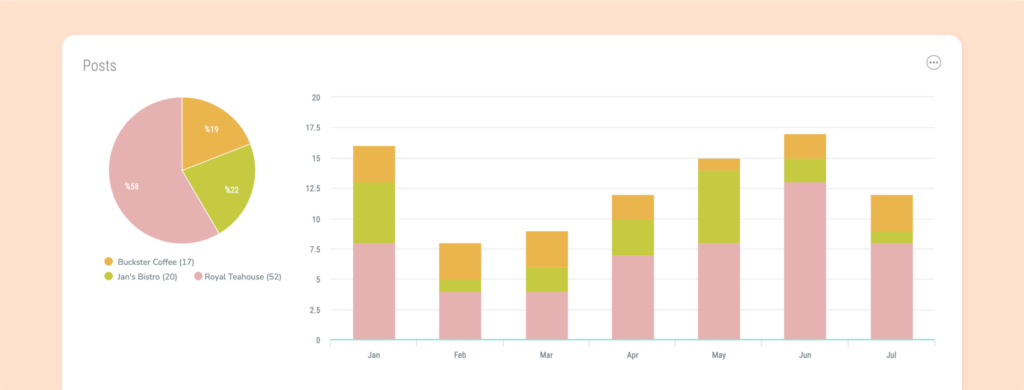
The Page Posts report shows the activity level of each of your competitors—that is, what type of content they share the most (images, videos, or text-only posts). The data from the report will help you adjust better your social media content strategy to that of your competitors.
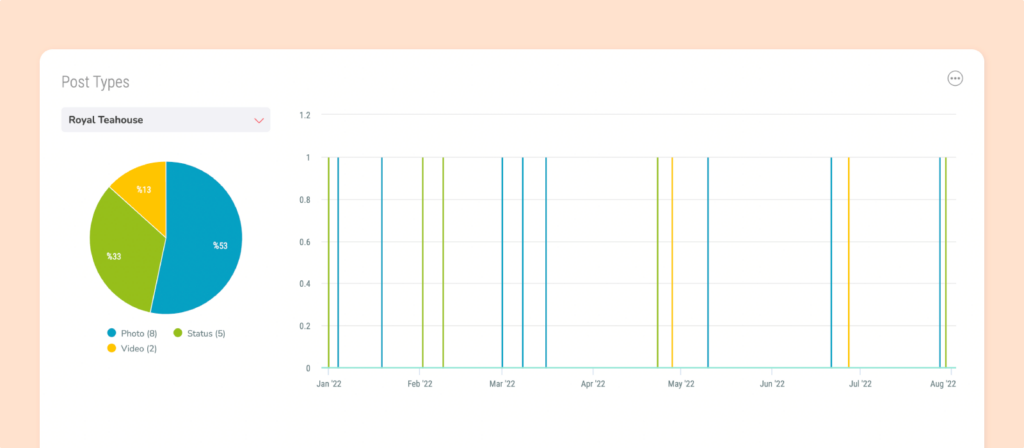
Specifically, Page Posts shows how many posts each of your competitors are posting either weekly or monthly.
Post Types show how much media a specific competitor is using in its Facebook posts.
Post Days and Post Hours are self-explanatory, but make sure to take a close look at these metrics as well to see if there are any patterns. Make sure to examine things like if your competitors post holiday messages and how they time promotional posts.
Engagement
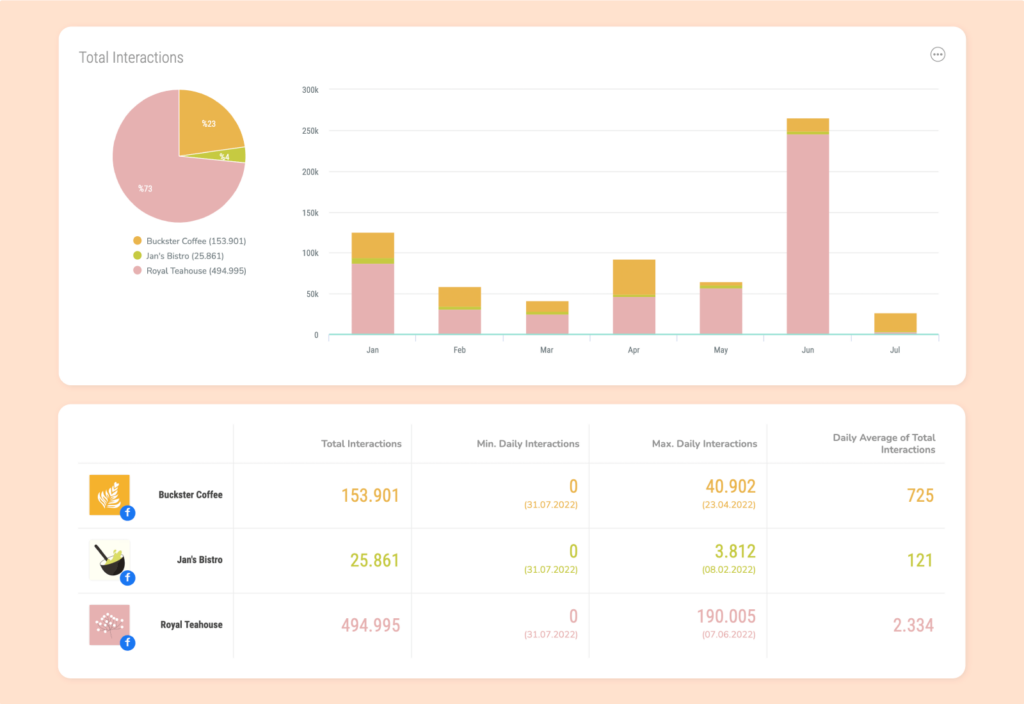
The third part of the Facebook Competitors Report showcases how much engagement your competitors receive for their Facebook posts. Other than the self-explanatory Engagement Rate monthly or weekly graph, you can also dive deeper and see Interaction Types, which shows what kind of engagement your competitors receive the most: reactions, shares, or comments.
In Reactions, you can see the total number of reactions that your competitor got at your selected time, and Reaction Types shows you the types of responses that a specific competitor is receiving the most. Comments and Shares show the number of the respective engagements your competitor received either weekly or monthly in the selected period.
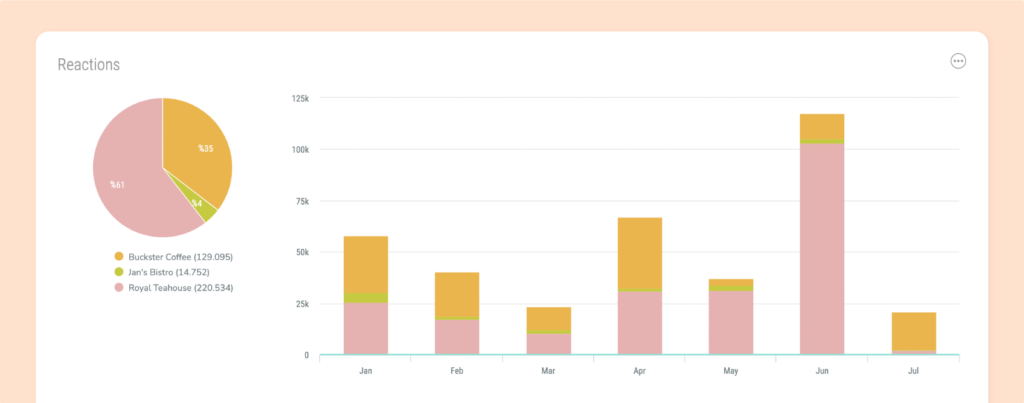
Content strategy
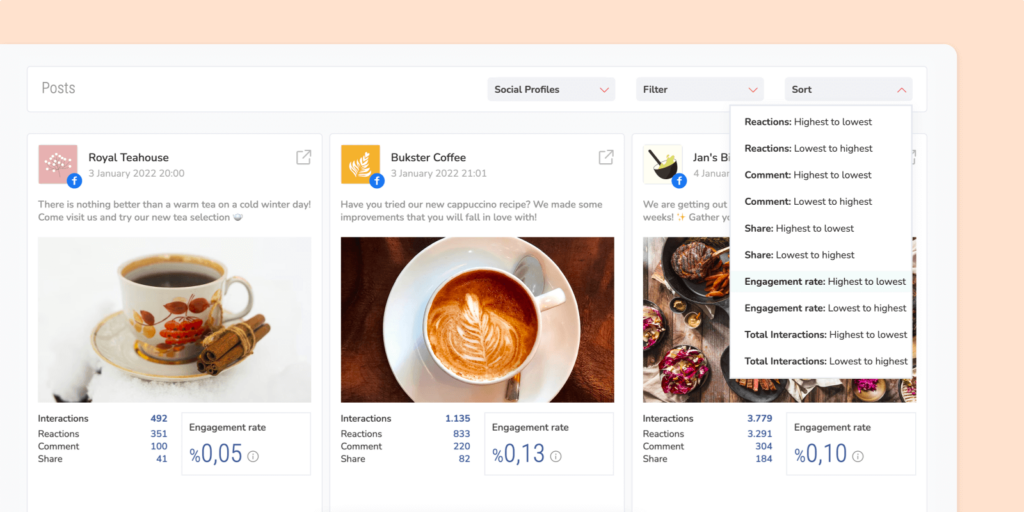
Sociality.io gathers your competitors’ content in one place so that you can use it depending on your needs.
With the help of your competitors’ content strategies, you can go behind the obvious metrics that you collected at the start of the guide to more sophisticated ones, as follows.
- What content generated the highest/lowest number of reactions?
- What content generated the highest/lowest number of comments?
- What content generated the highest/lowest number of shares?
- What content generated the highest/lowest engagement rate?
- What content generated the highest/lowest total interactions?
To wrap it all up…
Knowing the following of your competitors should help you understand how popular your own offering is on Facebook. Use your competitors’ data to set SMART goals for your social media following. However, make sure you will compare yourself with competitors that are close to your current level. If you’re a sneaker brand that is just starting, comparing yourself to the industry giants like Nike and Adidas won’t be realistic in the short term.
Also, take the time to dive deeper into their audience and see which demographic is the most prominent. This can also help you in your Buyer Persona development in case you haven’t done so already or are looking to improve it.
The more you know about your competitors, the more prepared you are to navigate the market. So, make sure you always monitor your competitors, especially on social media, for better-targeted campaigns.
